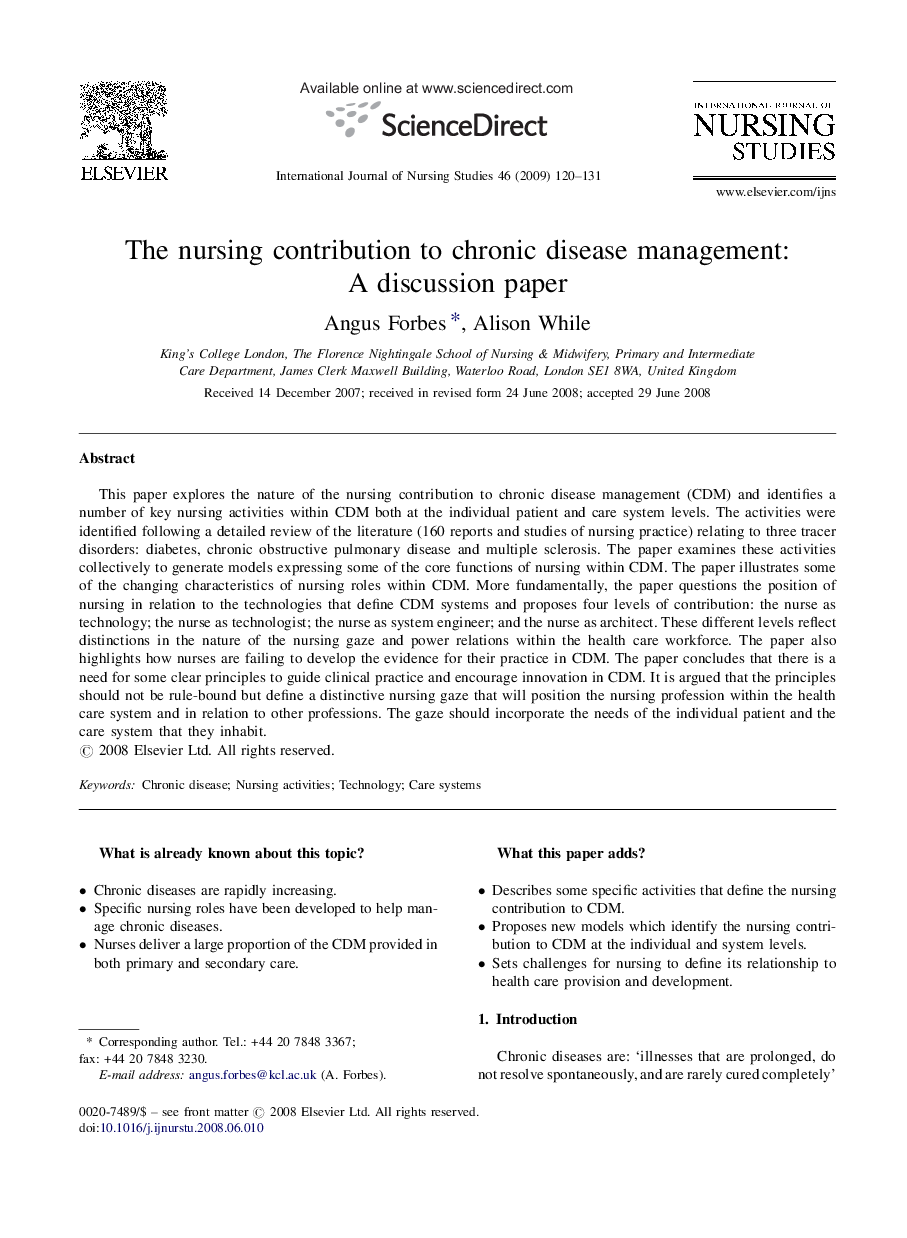| Article ID | Journal | Published Year | Pages | File Type |
|---|---|---|---|---|
| 1076734 | International Journal of Nursing Studies | 2009 | 12 Pages |
This paper explores the nature of the nursing contribution to chronic disease management (CDM) and identifies a number of key nursing activities within CDM both at the individual patient and care system levels. The activities were identified following a detailed review of the literature (160 reports and studies of nursing practice) relating to three tracer disorders: diabetes, chronic obstructive pulmonary disease and multiple sclerosis. The paper examines these activities collectively to generate models expressing some of the core functions of nursing within CDM. The paper illustrates some of the changing characteristics of nursing roles within CDM. More fundamentally, the paper questions the position of nursing in relation to the technologies that define CDM systems and proposes four levels of contribution: the nurse as technology; the nurse as technologist; the nurse as system engineer; and the nurse as architect. These different levels reflect distinctions in the nature of the nursing gaze and power relations within the health care workforce. The paper also highlights how nurses are failing to develop the evidence for their practice in CDM. The paper concludes that there is a need for some clear principles to guide clinical practice and encourage innovation in CDM. It is argued that the principles should not be rule-bound but define a distinctive nursing gaze that will position the nursing profession within the health care system and in relation to other professions. The gaze should incorporate the needs of the individual patient and the care system that they inhabit.
